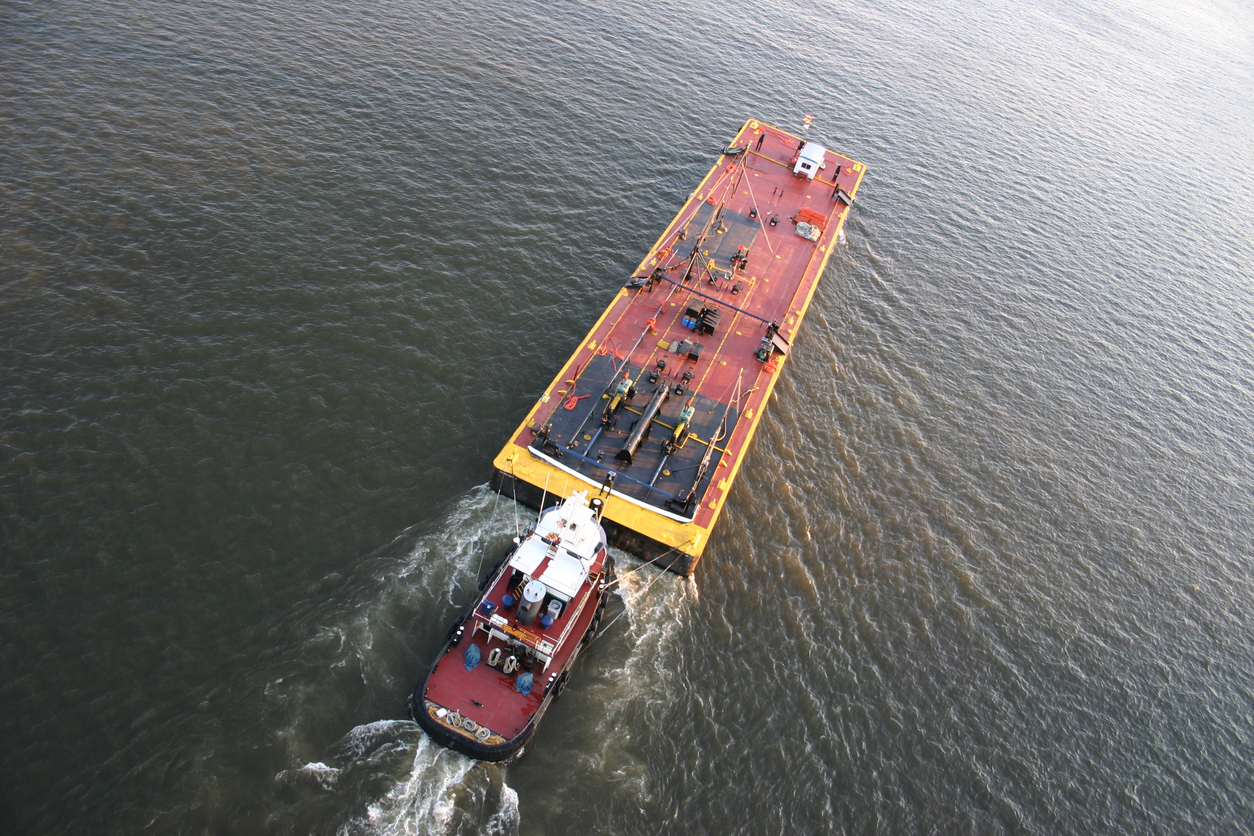
Understanding and Preventing Tug & Barge Risks
December 22, 2020
The maritime industry relies on tugboats and barges for a wide range of applications. Tugs are used to pilot vessels into and out of ports, while barges are used to transport bulk materials. The relationship between tugs and barges is critical, as most barges are not self-propelled and must rely on the skilled operation of a tug or tugs for propulsion. These unique vessels face many risks, and while commercial marine insurance serves to help manage those risks, understanding and preventing common tug & barge risks can help vessel owners and their crews perform their duties in a safe and efficient manner.
The Relationship Between Tugs and Barges
Whether plying the inland rivers of the United States or transporting bulk shipments across vast waterways, tugs and barges play a critical role in commercial cargo shipping. Barges are typically unpowered vessels and are designed to move large volumes of bulk goods like ores, agricultural products, and refuse. Some barges may be configured for containerized cargo as well. Because these vessels are unpowered, tugboats are used as prime movers for barges. By attaching towlines, tugs can pull or push these large vessels wherever they need to go. Tugs may be used individually in single tow configurations, or multiple tugs may be used to pull larger barges or several barges linked together.
Risks Associated with Tug & Barge Operations
As with any commercial vessel, tugs and barges face significant risks during operations. To supplement the protections of commercial marine insurance policies, fleet owners and their crews must gain an understanding of the common risks associated with tugs and barges. Common risks include:
- Stranding or grounding of both barges and their tugboats.
- Towline failures.
- Collisions with other vessels or shoreside structures.
- Fires.
Losses can also come from unexpected sources. In high-risk environments, such as in the Western Pacific, Southeast Asia, and the west coast of Africa, hijacking and piracy are major concerns for barge operators. Another risk exposure is the use of barges and tugs that do not meet international maritime standards or employing equipment that has not been maintained to prevailing safety requirements for the maritime industry.
Preventing Losses: Tug and Barge Risk Management
Commercial marine insurance stands as the foundation of any risk management strategy in the maritime industry. This valuable insurance provides coverage against losses or damage of vessels and their cargo under a variety of conditions. Still, insurance is not the only aspect of risk management; comprehensive implementation of safety-oriented practices and procedures has the effect of mitigating many of the common and unexpected risk exposures.
Barge and tug operators have a duty to provide safe transport of contracted cargoes. At the same time, safety of vessels and their crews is paramount. To ensure safe operations, and to minimize the claims against commercial marine insurance policies, fleet managers must address several risk management factors, including:
- Ensuring that tug and barge specifications meet established safety and operational standards.
- Matching barge and tug equipment to its intended use and voyage.
- Certification of crewmembers and pilots to comply with maritime requirements.
- Configuring tugs and barges for safe operation. Experts recommend single tow configurations; avoiding tandem or double tow rigs can minimize the chances of an incident while underway.
- Training crewmembers to handle special-risk cargoes where applicable.
- Careful planning of sea routes to avoid high-risk areas or unfavorable sea conditions.
- Insisting upon towage approval surveys by a reputable independent surveyor. This helps to ensure vessels meet all applicable national and international maritime standards.
Protecting vessels, cargo, and crew with risk management programs should be the primary consideration for fleet owners. With commercial marine insurance, and with the implementation of a comprehensive risk management plan, tug and barge operators can reduce or eliminate the chances of an expensive loss.
About Merrimac Marine Insurance
At Merrimac Marine, we are dedicated to providing insurance for the marine industry to protect your clients’ business and assets. For more information about our products and programs, contact our specialists today at (800) 681-1998.
